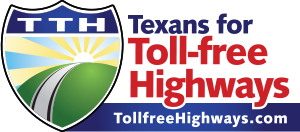“Ron Paul’s extraordinary fundraising success is a clear sign that there is a yearning by the Republican grassroots for the party to return to its historic small-government roots. Paul’s message of limited government, free markets and peace obviously has touched a chord. Perhaps the other candidates and the big-government conservatives in Washington should take notice.” —Michael TannerRead about how his grassroots supporters (not his campaign) raised $4.2 million in a SINGLE DAY to assure Ron Paul a place in the top tier and ultimately a place in history if he makes it to the White House.
Ron Paul on the Trans Texas Corridor/NAFTA Superhighways: “The ultimate goal is not simply a superhighway, but an integrated North American Union–complete with a currency, a cross-national bureaucracy, and virtually borderless travel within the Union. Like the European Union, a North American Union would represent another step toward the abolition of national sovereignty altogether.” – October 30, 2006



![[Rudy Giuliani]](http://online.wsj.com/public/resources/images/HC-GJ478_Giulia_20070212171248.gif)
![[Giuliani]](http://online.wsj.com/public/resources/images/NA-AO472A_GIULI_20071106205646.gif)